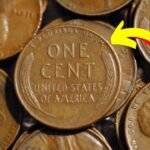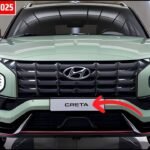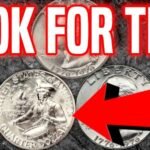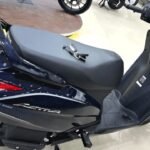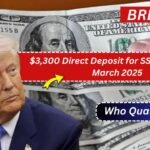If you’ve ever emptied out your coin jar without giving much thought to what’s inside, you might want to pause for a closer look. The world of coin collecting is full of hidden treasures, and sometimes, that ordinary-looking quarter you received in change could be hiding a stunning secret. Believe it or not, a rare $300K Bicentennial Quarter has captured the attention of collectors due to its extraordinary features and mind-blowing value. But it doesn’t stop there—there are several more coins out there, each valued at over $10,000, that might just be sitting unnoticed in someone’s drawer.
Let’s explore what makes the $300K Bicentennial Quarter and a handful of other rare coins so special—and why they’re worth hunting for.
The $300K Bicentennial Quarter
In 1975 and 1976, the United States Mint issued the special Bicentennial quarters to commemorate 200 years of American independence. These coins carry the dual date “1776–1976” on the obverse and feature a distinctive reverse design of a colonial drummer, a break from the usual eagle motif. While most of these quarters were produced in large numbers using copper-nickel clad compositions, a limited number were minted in silver for special proof and uncirculated sets. One such $300K Bicentennial Quarter—a rare specimen with a silver composition and intended for collectors—was mistakenly released into circulation. This rare oversight, combined with the coin’s exceptional condition, drove its value to nearly $300,000 at auction.
Why the $300K Bicentennial Quarter Is So Valuable
The value of the $300K Bicentennial Quarter stems from several key attributes:
- Composition: Most circulated Bicentennial quarters are clad, but the silver version contains 40% silver, making it more valuable.
- Rarity: Only a small number of the silver versions were accidentally released into general circulation, making them extremely rare.
- Condition: The most valuable coins are in near-mint or uncirculated condition. The $300K Bicentennial Quarter was found in exceptional shape.
- Error: Its presence in circulation, rather than being kept in a collector set, is technically an error—making it even more sought-after.
How to Spot a $300K Bicentennial Quarter
Think you might have a potential $300K Bicentennial Quarter in your pocket change or old coin jar? Here’s what to look for:
- Solid Silver Edge: Regular quarters have a visible copper stripe on the edge. A silver version will have a uniform silver-colored edge.
- Weight: Silver quarters weigh slightly more than their clad counterparts. A digital coin scale can help you check the weight.
- Luster and Condition: Shiny, scratch-free surfaces are a good sign. The better the condition, the more valuable the coin.
- Get It Graded: If your quarter ticks all the boxes, send it to a professional coin grading service. Authentication and grading can significantly boost value.
Now, while the $300K Bicentennial Quarter is the crown jewel, it’s not the only high-value coin out there. Here are four more quarters that can fetch over $10,000 apiece.
1. 1932-D Washington Quarter
The Washington quarter series began in 1932 to mark George Washington’s 200th birthday. Among its earliest and rarest releases is the 1932-D Washington quarter minted in Denver.
Why It’s Valuable
With only 436,800 produced, the 1932-D has the second-lowest mintage of all Washington quarters. Many were heavily circulated, so high-grade specimens are rare. In pristine condition, this coin can sell for more than $10,000.
What to Look For
- Mint Mark: Look for the “D” mint mark on the reverse, just below the eagle.
- Condition: Coins with little wear or in uncirculated grades are far more valuable than those showing heavy use.
2. 1896-S Barber Quarter
The Barber quarter series was in circulation from 1892 to 1916. The 1896-S Barber quarter, minted in San Francisco, is one of the scarcest in the entire series.
Why It’s Valuable
Only 188,039 of these quarters were minted, and few survive in collectible condition. That rarity translates to value: well-preserved examples frequently sell for over $10,000.
What to Look For
- Mint Mark: The “S” mint mark is located beneath the eagle on the reverse.
- Wear and Tear: Even worn coins have value, but crisp, sharply detailed pieces are where the big money lies.
3. 1950-D Washington Quarter (Doubled Die Reverse)
Minting errors are gold for collectors, and the 1950-D Washington quarter features one of the most desirable mistakes: a doubled die on the reverse.
Why It’s Valuable
In this coin, the doubling on the reverse lettering is unmistakable. Because only a limited number exist and the mistake is so prominent, this quarter has sold for more than $10,000 in top condition.
What to Look For
- Doubling: Inspect the reverse for double lines on “UNITED STATES OF AMERICA” and “E PLURIBUS UNUM.”
- Certification: If you think you’ve found one, get it certified and graded by a reputable coin grading service.
4. 1804 Draped Bust Quarter
Among early American coinage, the 1804 Draped Bust quarter is a standout for its rarity and historical value. It’s one of the earliest quarter designs, and few examples remain today.
Why It’s Valuable
Low mintage and age make this coin extremely rare. Even coins in heavily worn condition have sold for well over $10,000. In mint state, prices can skyrocket.
What to Look For
- Design Features: Look for the Draped Bust of Lady Liberty on the obverse and a small eagle on the reverse.
- Condition: Any version of this coin is valuable, but high-grade examples command the highest premiums.
Coin Hunting Tips: What to Keep an Eye On
If this article has inspired you to dig through your change, here are some practical tips to guide your search:
- Mint Marks: Coins with “D” (Denver) or “S” (San Francisco) mint marks often have lower mintage numbers and can be more valuable.
- Errors: Look for signs of doubling, off-center strikes, or other oddities. These errors can skyrocket a coin’s value.
- Silver Content: Quarters minted before 1965 are composed of 90% silver and are worth significantly more than face value.
- Proof or Cameo Finish: These are specially struck coins with extra detail and shine. They weren’t intended for circulation and can be highly valuable when found in the wild.
Final Thoughts
It’s almost magical to think that a simple quarter could be worth tens of thousands—or even hundreds of thousands—of dollars. The $300K Bicentennial Quarter is living proof that hidden treasure might be lurking in plain sight. With its silver composition, circulation error, and pristine condition, this quarter transformed from spare change into a life-changing payday. While not every quarter will be worth a fortune, coins like the 1932-D Washington, 1896-S Barber, 1950-D doubled die, and 1804 Draped Bust are more examples of how valuable everyday items can become over time.
So the next time you’re counting out change, don’t rush. Take a moment to examine each coin. Look for mint marks, silver edges, and design anomalies. Who knows? You might be holding a $300K Bicentennial Quarter in your hand without even realizing it.
FAQs
Are all Bicentennial quarters valuable?
No. Most Bicentennial quarters are common and worth face value. Only rare silver or error versions—like the $300K Bicentennial Quarter—have high value.
How can I tell if my Bicentennial quarter is silver?
Check the coin’s edge. A silver quarter will have a solid silver edge, while clad coins show a copper stripe.
Why is the 1950-D quarter valuable?
It features a doubled die error on the reverse side, making it one of the rarest and most sought-after Washington quarters.
What makes the $300K Bicentennial Quarter so rare?
Its silver composition, error release into circulation, and near-perfect condition combined to make it an ultra-rare find.
Should I get my quarter graded?
Yes. If you suspect you have a valuable coin—especially a $300K Bicentennial Quarter—have it professionally graded to confirm authenticity and maximize its value.
Some Important Link
| Telegram Group | Click Here |
| WhatsApp Group | Click Here |
| Home Page | Click Here |



